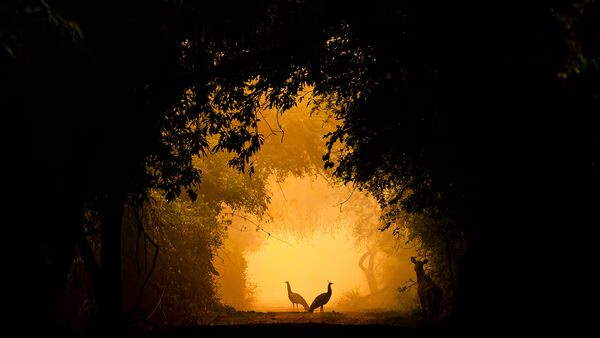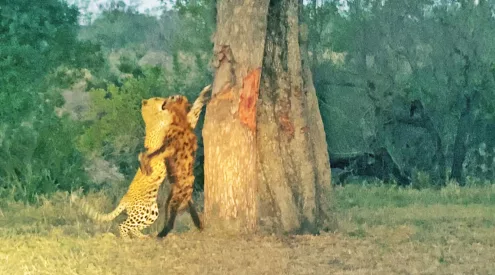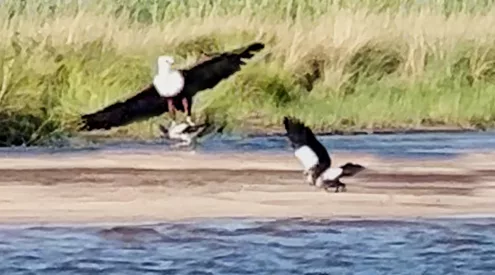About 10 000 years ago cats arrived unrequested, with no contract, no obligations. Attracted, possibly, by rats in our bone piles or mice in our grain stores, they were useful. Eventually we needed them, but they didn’t need us. They warmed themselves by our hearth fires, but kept their silent paws firmly in the wild.
They were superb hunters – and beautiful. We admired them and credited them with many lives. They always landed on their feet. In Siam, they guarded our sacred places. In Egypt, we worshipped them. We feared them as witches’ familiars and worried when they crossed our path. Occasionally we ate them. We called them silly names, which they deigned to answer. They seldom came when we called. They purred when we stroked them and when they’d had enough of that they bit us without restraint.
Dogs are pack animals and can be trained to do our bidding. Don’t try that with a cat. For this reason, debates have raged about whether cats are too dumb or too smart to take our instructions. But to be caught in the intense, green-eyed gaze of a cat leaves you in no doubt of the latter. The truth is they do what they damn well like, whenever they like and with whomever they please. They accept our food and shelter, but can live perfectly well without it, from the frozen latitudes to the hottest deserts. They use us for their purposes and have done for thousands of years. And mostly we adore them. If that’s not being smart, then intelligence needs a new definition.
The poet TS Eliot noticed their mysterious self-possession. In a poem, The Naming of Cats, he wrote: ‘But above and beyond there’s still one name left over/And that is the name that you never will guess/The name that no human research can discover/But the cat himself knows, and will never confess.’
The cats to whom I will introduce you have the sort of misguided names of which no self-respecting felis would approve. They include Truffles, Stompie, Bengie, Lulu-Belle, Smudge, Peanut, Scamp and, heaven forbid, Drooler. They were induced to take part in a study by University of Cape Town researcher Sharon George of the Percy FitzPatrick Institute. She used a high-tech approach to find out what cats do when their owners aren’t around. Do they curl up on the cushions and await the return of their chosen humans? Do they perch on the porch licking their paws and washing their pert noses? Where do they go when we’re out of sight? Upon what unsuspecting creatures do they pounce?
What Sharon found was a testament to how little we know about our moggies. Take Scamp of Vredehoek, an inner-city Cape Town suburb. He was fitted with a small GPS recorder and tracked for 168 hours. He covered an astounding 42 hectares, roaming many kilometres a day. Truffles, Bengie and Stompie weren’t far behind. Drooler outdid them all in straight-line stakes, having been logged nearly a kilometre from home. Speeds were about a kilometre an hour, so what you’re looking at is seriously dedicated prowling.
What were they doing out there unseen? Apart from yowling, sniffing and checking the neighbourhood, they were killing. With deadly efficiency. It turns out that in sheer numbers of prey captured, Truffles, Lulu-Belle, Drooler and co – Felis catus, to be precise – are among the most successful killers on Earth.
In this, the first African-based study into the impact of domestic cats on wildlife, Sharon recorded 31 species caught by 78 cats over about 10 weeks. Nearly half were small mammals (mainly striped mice), a quarter were reptiles, 17 species were birds and 10 were amphibians, particularly rain frogs. Of invertebrates, more than half were moths and stick insects. All the felines were well fed by their owners, but caught prey anyway because, quite simply, cats have never really been domesticated and catching things is what cats do. They’re recreational hunters.
Now here’s when it begins to get scary. There are about 986 000 households in greater Cape Town with 12 cat owners per 100 houses who average 2,3 cats each. That gives you 272 000 moggies, excluding feral and township cats. The study conservatively estimated the number of creatures caught in the city at more than 3,6 million a year (excluding what was eaten before being found by owners or which wasn’t returned home for proud display).
There are nine million households in South Africa from which, each year, 2,5 million cats emerge to kill more than 47 million wild creatures. The number of domesticated cats in the world is estimated at 500 million, which means 9,5 billion wild creatures are probably going down their greedy gullets each year. And that’s a conservative guess. Your eyes are rolling. I’ll stop there.
Why are domestic cats among the planet’s top predators? It’s because we feed them, pay their vet bills, keep them safe and warm, they have no predators other than motorcars and the occasional dog. They’re remorseless killers protected by the most successful predator of all – us. They’re the piranhas of the urban landscape. Put them on an island and they’re a recipe for avian extinction. Don’t ask the flightless Stephens Island wren. It was eaten to extinction only a few years after its discovery, as were several hundred other species.
Okay, don’t shoot the messenger. I love cats. But, just in case you’d like to know, according to the Chinese who eat around four million a year, they taste a bit like rabbit. It takes about 24 of them to make a fur coat.
If you’re a responsible cat owner:
- Put a bell on your cat’s collar – it halves the prey capture success. Two bells are better than one.
- Restrict the movements of your cat – allow it out by day and keep it in at night.
- Feed it as often as you can – the best-fed cats have lower predation rates.
- Limit the number of cats to one in your home and have them spayed.
- Report all ringed birds caught by your cat to SAFRING, University of Cape Town, safring.adu.org.za.
(Photo by Alice Vegas Photography)


















